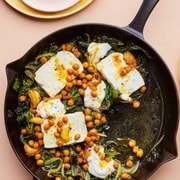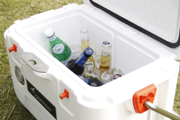Sneaky ways supermarkets make you overspend—without you realizing it
By
Veronica E.
- Replies 0
Ever walked out of the grocery store and thought, "Wait, how did I spend that much?"
You're not imagining things.
Supermarkets are engineered to get you to spend more—often in ways that are nearly invisible.
But once you understand how the system works, you can start shopping on your own terms.
The GrayVine is here to help you decode the tricks of the trade—and keep more money in your pocket.
Let’s examine one of the most underestimated tactics of modern retail: product placement.

Eye level isn’t neutral—it’s profitable
Supermarkets use something called a planogram, which is essentially a psychological map of the shelf.
These layouts are carefully designed not for your convenience, but to maximize profits.
One of the most powerful rules in a planogram is known as: “Eye level is buy level.”
That means the products placed right at your line of sight are there for one reason—they’re the items the store most wants you to buy.
These are often the more expensive name-brand products or those with the highest profit margins.
In contrast, store-brand items or less-marketed options—which are usually just as good—are tucked away on the bottom or top shelves.
So, if you’re only shopping at eye level, you're likely paying more than you need to!
Also read: You won’t believe the new “inconvenient” step grocery customers face as soon as they enter
The surprising truth about store-brand value
A consumer test by the watchdog group Which? found that in a major UK retailer’s tea aisle, eye-level shelves were stocked with premium brands like PG Tips, priced at £2.98 (about $3.80).
But on the bottom shelf? The store’s own tea bags at £2 (around $2.60).
Not only were they cheaper, but they also won in blind taste tests.
This reinforces a crucial point: Higher price doesn't always mean higher quality—it sometimes just means better shelf placement.
Also read: Stop wasting money today: The grocery items that are draining your wallet revealed!
Other subtle tactics that shape your shopping behavior
Shelf positioning is just the beginning.
Supermarkets employ a suite of strategies designed to influence your decisions without you even noticing:
Also read: $20 off your grocery bill every month? This credit card trick makes it easy
How to reclaim control of your grocery bill
Awareness is your most powerful tool.
Here are five research-backed strategies that can help you navigate your next grocery trip with confidence:
Supermarkets are highly optimized environments that combine behavioral psychology, data science, and marketing tactics to influence your choices.
But when you're informed, you're in charge.
By simply shifting your gaze and rethinking your route through the store, you can sidestep the traps—and enjoy real savings.
Read next: Slash your grocery bill with this simple trick—learn how and save money!

Have you found any surprising savings by shopping off the beaten path in your grocery store? Do you use strategies like price tracking, coupon stacking, or store loyalty programs? Share your favorite tricks for shopping smarter in the comments below!
You're not imagining things.
Supermarkets are engineered to get you to spend more—often in ways that are nearly invisible.
But once you understand how the system works, you can start shopping on your own terms.
The GrayVine is here to help you decode the tricks of the trade—and keep more money in your pocket.
Let’s examine one of the most underestimated tactics of modern retail: product placement.

Understanding how products are placed on store shelves can help shoppers make smarter, more budget-friendly choices. Image source: Pexels / Gustavo Fring.
Eye level isn’t neutral—it’s profitable
Supermarkets use something called a planogram, which is essentially a psychological map of the shelf.
These layouts are carefully designed not for your convenience, but to maximize profits.
One of the most powerful rules in a planogram is known as: “Eye level is buy level.”
That means the products placed right at your line of sight are there for one reason—they’re the items the store most wants you to buy.
These are often the more expensive name-brand products or those with the highest profit margins.
In contrast, store-brand items or less-marketed options—which are usually just as good—are tucked away on the bottom or top shelves.
So, if you’re only shopping at eye level, you're likely paying more than you need to!
Also read: You won’t believe the new “inconvenient” step grocery customers face as soon as they enter
The surprising truth about store-brand value
A consumer test by the watchdog group Which? found that in a major UK retailer’s tea aisle, eye-level shelves were stocked with premium brands like PG Tips, priced at £2.98 (about $3.80).
But on the bottom shelf? The store’s own tea bags at £2 (around $2.60).
Not only were they cheaper, but they also won in blind taste tests.
This reinforces a crucial point: Higher price doesn't always mean higher quality—it sometimes just means better shelf placement.
Also read: Stop wasting money today: The grocery items that are draining your wallet revealed!
Other subtle tactics that shape your shopping behavior
Shelf positioning is just the beginning.
Supermarkets employ a suite of strategies designed to influence your decisions without you even noticing:
- Strategic separation of essentials: Staples like milk, eggs, and bread are placed far apart—forcing you to walk past dozens of other items.
- End-of-aisle “deals”: These displays often look like big savings, but many feature full-priced products or minimal discounts designed to trigger impulse buys.
- Music and lighting design: Stores use warm lighting and slow music to relax you—encouraging more browsing and, therefore, more spending.
- The “decompression zone”: The first few feet inside the store are purposefully left relatively clear. That’s because shoppers entering a new space need a moment to adjust—and won’t start shopping until they’ve mentally “arrived.”
Also read: $20 off your grocery bill every month? This credit card trick makes it easy
How to reclaim control of your grocery bill
Awareness is your most powerful tool.
Here are five research-backed strategies that can help you navigate your next grocery trip with confidence:
- Scan top and bottom shelves – The best bargains often require a little stretching or squatting. Look beyond the obvious.
- Use a detailed shopping list – This is the single most effective way to avoid unplanned purchases.
- Compare unit prices – Bigger packages aren’t always cheaper. Check the price per ounce or per item on the shelf label.
- Shop after meals, not before – Shopping hungry increases impulse spending across all age groups.
- Question promotions – “Buy one, get one” and flashy displays are often about inventory clearance, not actual savings.
Supermarkets are highly optimized environments that combine behavioral psychology, data science, and marketing tactics to influence your choices.
But when you're informed, you're in charge.
By simply shifting your gaze and rethinking your route through the store, you can sidestep the traps—and enjoy real savings.
Read next: Slash your grocery bill with this simple trick—learn how and save money!
Key Takeaways
- Supermarkets use psychological techniques like planograms to influence spending, especially through eye-level product placement.
- More expensive items are often positioned for maximum visibility, while cheaper and equally good alternatives are placed out of easy reach.
- Other tactics include strategic store layouts, misleading sales displays, and sensory cues to keep shoppers browsing longer.
- Smart shopping involves planning ahead, scanning all shelves, comparing unit prices, and staying focused on actual needs over impulse buys.
Have you found any surprising savings by shopping off the beaten path in your grocery store? Do you use strategies like price tracking, coupon stacking, or store loyalty programs? Share your favorite tricks for shopping smarter in the comments below!






